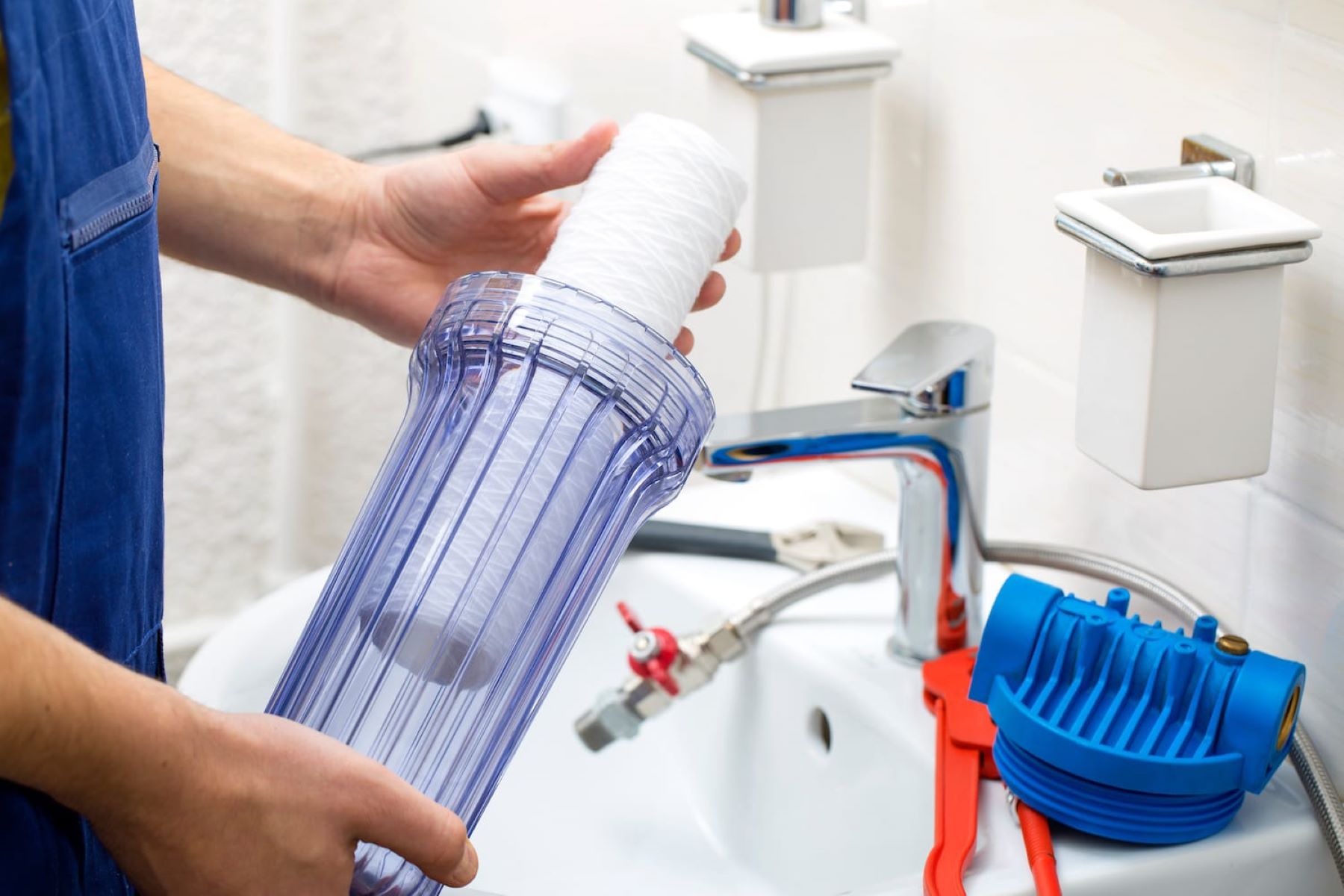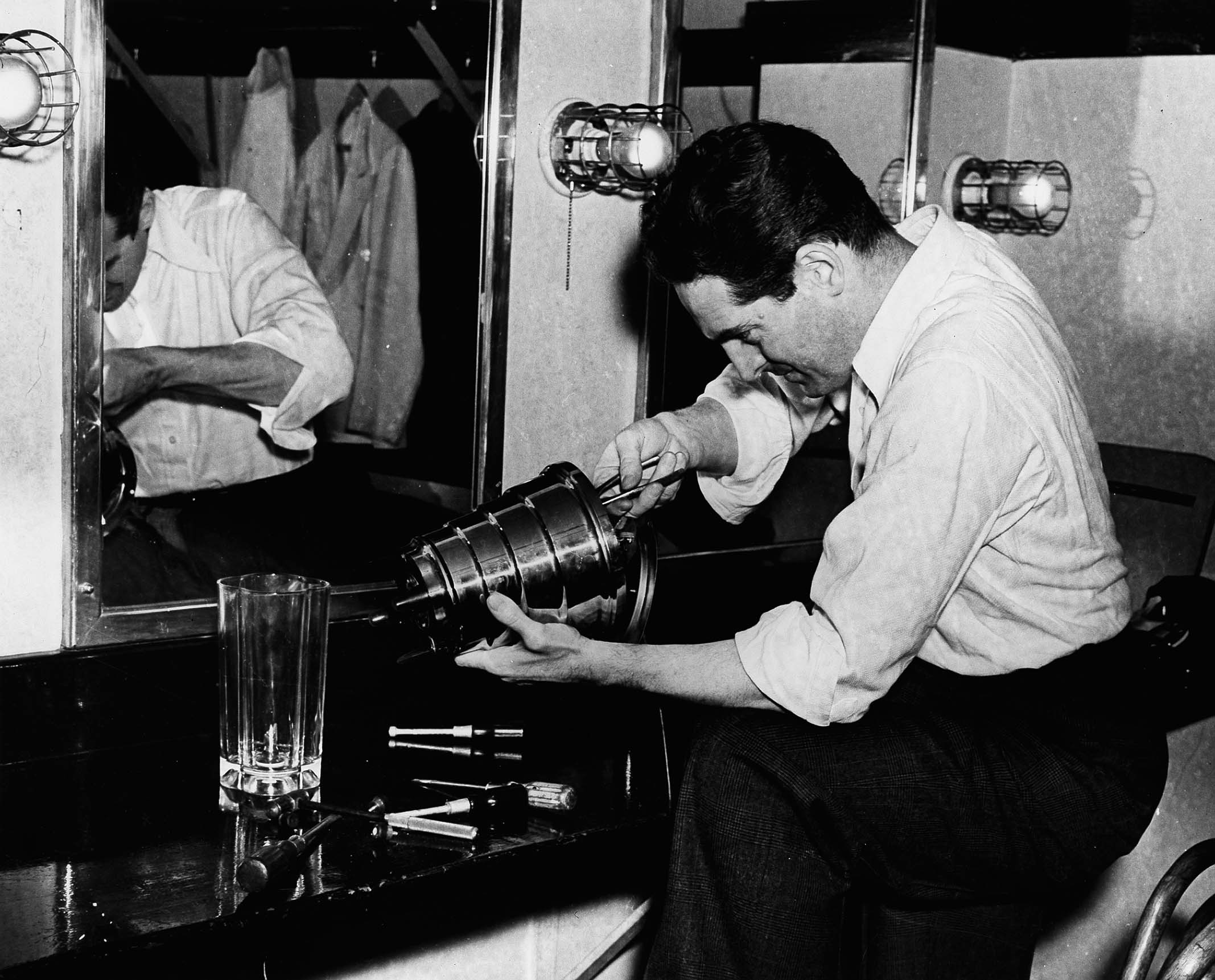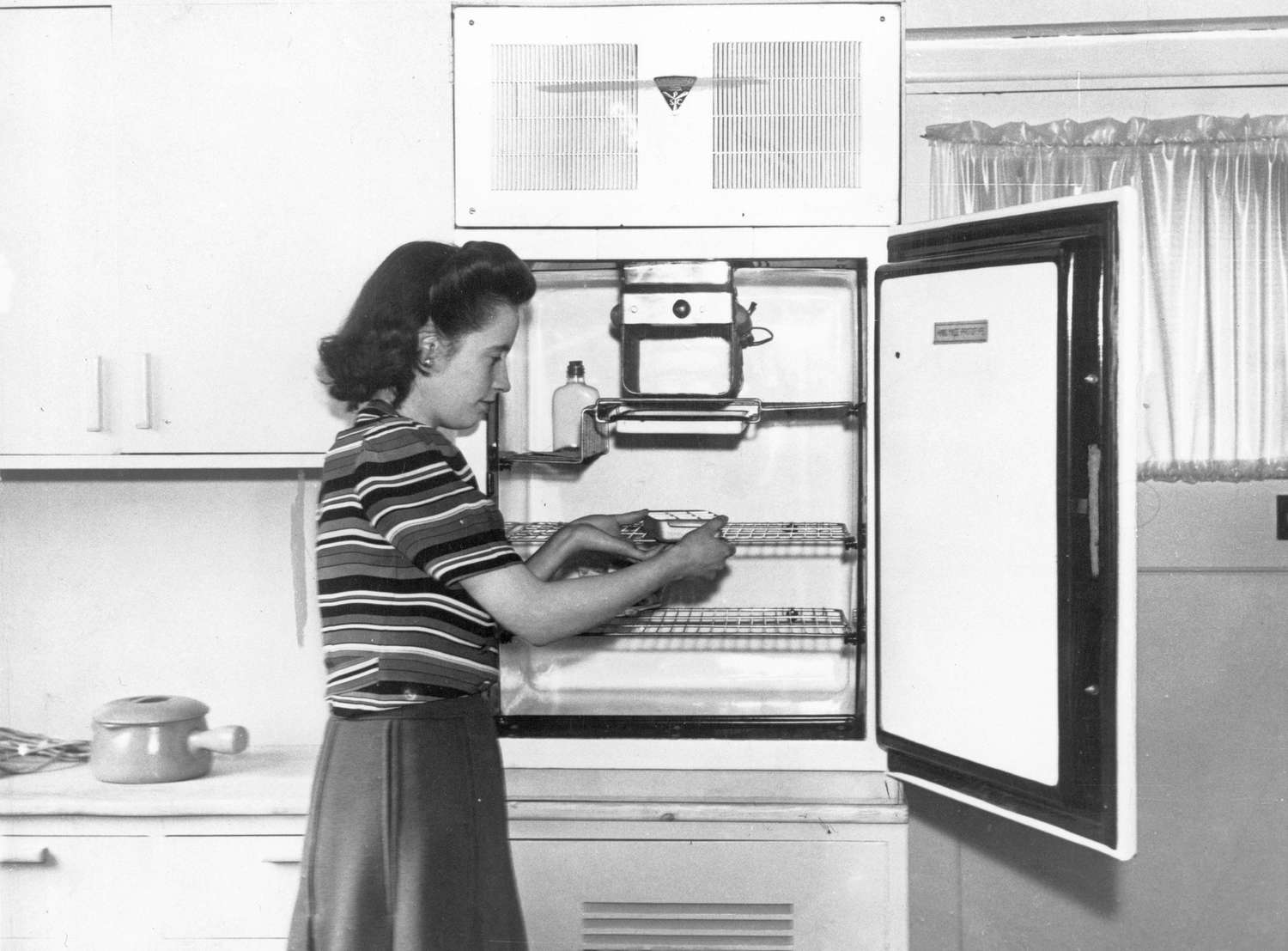Home>Health & Lifestyle>Air Quality & Filtration>When Was Water Filtration Invented


Air Quality & Filtration
When Was Water Filtration Invented
Modified: January 4, 2024
Learn about the history of water filtration and its impact on air quality and filtration. Discover when water filtration was first invented and its significance today.
(Many of the links in this article redirect to a specific reviewed product. Your purchase of these products through affiliate links helps to generate commission for Storables.com, at no extra cost. Learn more)
Introduction
Water filtration is a crucial process that ensures access to clean and safe drinking water. It plays a significant role in safeguarding public health and promoting overall well-being. Throughout history, various methods and technologies have been developed to purify water, addressing the need for potable water in different communities and civilizations. From ancient filtration techniques to modern advancements, the evolution of water filtration reflects humanity’s continuous efforts to improve living conditions and combat waterborne diseases.
As we delve into the history of water filtration, we gain a deeper appreciation for the innovative solutions that have emerged over time. This journey allows us to understand the challenges faced by our ancestors and the remarkable ingenuity they demonstrated in developing early filtration methods. Furthermore, it sheds light on the transformative impact of modern technologies, which have revolutionized the way we purify and distribute water on a global scale. By exploring the evolution of water filtration, we can grasp the significance of ongoing research and development in this vital field, aiming to provide clean and sustainable water sources for future generations.
Key Takeaways:
- Ancient civilizations used sand, charcoal, and clay to filter water, showing early ingenuity in addressing water quality concerns.
- Modern water filtration methods like reverse osmosis and UV purification ensure access to clean and safe drinking water for communities worldwide.
Read more: When Was The Water Fountain Invented
Early Water Filtration Methods
Centuries ago, our ancestors recognized the importance of obtaining clean water for consumption and sanitation. Early civilizations implemented rudimentary yet effective methods to filter water, ensuring its purity and safety. These methods varied across different regions, reflecting the diverse approaches to water filtration in ancient times.
Sand Filtration: One of the earliest known water filtration techniques involved the use of sand. Ancient communities would pour water through layers of coarse and fine sand, a process that effectively removed impurities and sediments. This method, while simple, demonstrated an early understanding of filtration principles and the potential for natural materials to purify water.
Charcoal Filtration: Another notable method utilized charcoal as a filtering medium. Charcoal, with its porous structure, was adept at trapping contaminants and odors, resulting in cleaner and better-tasting water. This approach was particularly prevalent in regions where charcoal was readily available, showcasing the resourcefulness of early societies in addressing water quality concerns.
Clay Pot Filtration: In certain ancient cultures, clay pots were employed as filtration devices. Water stored in porous clay containers would gradually seep through the vessel, leaving behind impurities and sediment. This slow percolation process significantly improved the water’s clarity and purity, representing a significant advancement in early water filtration technology.
These early filtration methods, though basic by today’s standards, laid the foundation for subsequent innovations in water purification. They exemplify the resourcefulness and practical knowledge of ancient civilizations, highlighting the fundamental human need for clean water and the persistent quest to achieve it through innovative means.
Ancient Water Filtration Techniques
Ancient civilizations developed a diverse array of water filtration techniques, each tailored to their specific environmental and cultural contexts. These innovative methods, born out of necessity, reflect the resourcefulness and ingenuity of our ancestors in addressing the challenges of water purification.
Greek and Roman Aqueducts: The ancient Greeks and Romans engineered sophisticated aqueduct systems to transport and filter water. These aqueducts utilized gravity to channel water from distant sources to urban centers, often incorporating sand and gravel filtration beds to remove impurities. The meticulous design and construction of these aqueducts demonstrated a profound understanding of hydraulic engineering and filtration principles, ensuring the delivery of relatively clean water to densely populated areas.
Chinese Ceramic Water Filters: In ancient China, ceramic water filters emerged as an effective means of purifying drinking water. These filters, crafted from porous clay, effectively trapped sediment, bacteria, and other contaminants, producing potable water for domestic use. The widespread adoption of ceramic water filters in Chinese households underscored the value placed on clean water and the innovative craftsmanship of ancient ceramic artisans.
Indus Valley Civilization’s Stepwells: The sophisticated stepwells of the ancient Indus Valley Civilization served not only as reservoirs but also as filtration structures. These architectural marvels featured intricate designs that allowed water to percolate through layers of sand and gravel, effectively purifying it before consumption. The stepwells exemplify the fusion of engineering prowess and water management strategies, showcasing the importance of clean water in sustaining thriving urban settlements.
These ancient water filtration techniques, rooted in diverse cultural and geographical contexts, exemplify the universal human pursuit of clean and safe drinking water. They stand as testaments to the innovative spirit of our forebears, who leveraged local resources and knowledge to develop solutions that continue to inspire modern advancements in water filtration technology.
The first recorded use of water filtration dates back to 2000 BC in ancient Egypt, where they used a simple sand and gravel filter to purify water.
Modern Water Filtration Methods
In contemporary times, the quest for clean and potable water has led to the development of advanced filtration methods that harness cutting-edge technology and scientific principles. These modern techniques have revolutionized the purification of water, catering to the diverse needs of urban, industrial, and rural settings while addressing increasingly complex waterborne contaminants.
Reverse Osmosis: Reverse osmosis has emerged as a leading technology for purifying water on both small and large scales. This process utilizes a semipermeable membrane to remove ions, molecules, and larger particles from water, yielding exceptionally pure results. Reverse osmosis systems are widely used in residential water treatment, desalination plants, and industrial processes, showcasing their versatility and efficacy in producing high-quality drinking water.
Activated Carbon Filtration: Activated carbon filtration is a prevalent method employed in water treatment facilities and household filtration systems. By adsorbing organic compounds, chlorine, and other impurities, activated carbon effectively enhances water quality and taste. This method is instrumental in removing common water contaminants, making it a cornerstone of modern filtration technology.
UV Water Purification: Ultraviolet (UV) water purification systems have gained prominence for their ability to disinfect water by deactivating bacteria, viruses, and protozoa. UV light disrupts the DNA of microorganisms, rendering them unable to reproduce and causing them to be effectively neutralized. This chemical-free method has become a valuable tool in ensuring microbiologically safe drinking water in various settings.
Membrane Filtration: Membrane filtration technologies, including microfiltration, ultrafiltration, nanofiltration, and microfiltration, utilize membranes with varying pore sizes to remove contaminants from water. These processes are integral to wastewater treatment, industrial water reuse, and producing high-purity water for specialized applications, illustrating the versatility and precision of membrane filtration in diverse water treatment scenarios.
These modern water filtration methods exemplify the intersection of scientific innovation and practical utility, addressing the evolving challenges of water quality and public health. By leveraging advanced technologies, these methods contribute to the global effort to ensure access to clean and safe drinking water for communities worldwide.
Advancements in Water Filtration Technology
The realm of water filtration technology has witnessed remarkable advancements, driven by a convergence of scientific research, engineering innovation, and a growing awareness of the importance of clean water. These advancements have propelled the field of water treatment forward, enabling the development of more efficient, sustainable, and accessible filtration solutions to address contemporary water quality challenges.
Nanotechnology Applications: The integration of nanotechnology in water filtration has opened new frontiers in contaminant removal and water purification. Nanomaterials, such as carbon nanotubes and graphene oxide, exhibit exceptional adsorption properties, enabling the capture of pollutants at the nanoscale. This breakthrough has paved the way for the development of highly effective and compact filtration systems capable of targeting specific contaminants with unprecedented precision.
Smart Filtration Systems: The advent of smart filtration systems, equipped with sensor technology and real-time monitoring capabilities, has revolutionized water treatment processes. These systems can autonomously adjust filtration parameters based on water quality data, optimizing efficiency and resource utilization. Additionally, remote monitoring and predictive maintenance features enhance the reliability and performance of filtration infrastructure, contributing to sustainable water management practices.
Energy-Efficient Filtration Technologies: The drive toward sustainability has spurred the development of energy-efficient filtration technologies that minimize power consumption without compromising filtration efficacy. Innovations such as low-pressure membrane systems and advanced aeration techniques have reduced the energy footprint of water treatment processes, aligning with global efforts to achieve environmentally responsible and cost-effective water purification solutions.
Integration of Advanced Oxidation Processes: Advanced oxidation processes (AOPs) have gained prominence for their ability to degrade persistent organic pollutants and emerging contaminants in water. By harnessing powerful oxidants such as ozone and ultraviolet light, AOPs can effectively neutralize a wide range of contaminants, including pharmaceutical residues and industrial chemicals, contributing to enhanced water quality and public health protection.
These advancements in water filtration technology represent a paradigm shift in the way we approach water treatment and purification. By embracing cutting-edge scientific and engineering principles, these innovations hold the potential to address emerging water quality concerns and ensure the sustainable provision of clean water for generations to come.
Read more: When Was The Bathtub Invented
Conclusion
The evolution of water filtration stands as a testament to human ingenuity, resilience, and commitment to securing clean and safe drinking water for communities worldwide. From ancient civilizations’ rudimentary yet effective filtration methods to the modern era’s sophisticated technologies, the journey of water purification reflects our enduring quest to overcome waterborne challenges and enhance public health.
Throughout history, the development of water filtration has been intertwined with cultural, technological, and environmental contexts, shaping diverse approaches to addressing water quality concerns. The ancient wisdom of utilizing natural materials such as sand, charcoal, and clay for filtration laid the groundwork for subsequent innovations, demonstrating the resourcefulness and practical knowledge of early societies.
In the modern age, advancements in water filtration technology have propelled the field forward, enabling the deployment of highly efficient, sustainable, and adaptable filtration solutions. Nanotechnology applications, smart filtration systems, energy-efficient technologies, and advanced oxidation processes have revolutionized the landscape of water treatment, offering unprecedented precision, reliability, and environmental stewardship in safeguarding water resources.
As we navigate the complexities of water quality management and the pressing need for global access to clean water, the continued advancement of water filtration technology holds immense promise. By integrating scientific breakthroughs, engineering excellence, and a commitment to sustainability, we can address emerging contaminants, mitigate water scarcity, and ensure equitable access to potable water for all individuals and communities.
Ultimately, the story of water filtration is a testament to humanity’s capacity for innovation and collaboration in overcoming fundamental challenges. By honoring the legacy of ancient filtration techniques and embracing the possibilities of modern advancements, we can forge a future where clean water is not only a necessity but a universal right, fostering health, prosperity, and environmental stewardship for generations to come.
Frequently Asked Questions about When Was Water Filtration Invented
Was this page helpful?
At Storables.com, we guarantee accurate and reliable information. Our content, validated by Expert Board Contributors, is crafted following stringent Editorial Policies. We're committed to providing you with well-researched, expert-backed insights for all your informational needs.















0 thoughts on “When Was Water Filtration Invented”